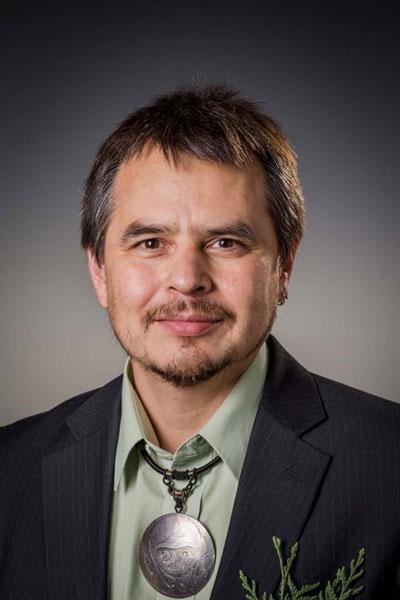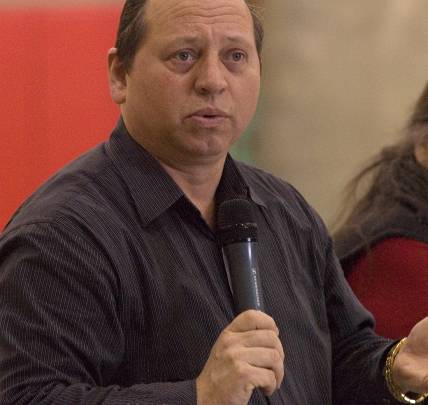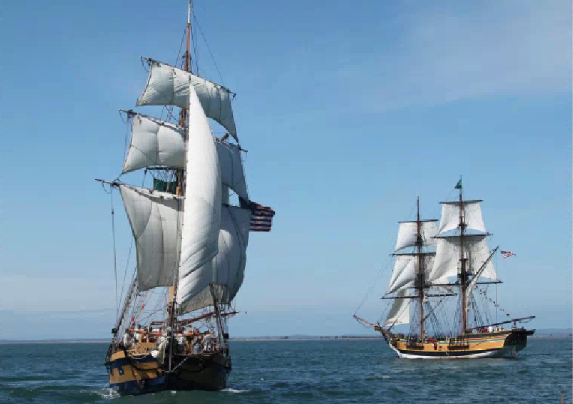From the late 1800s until 1934 in the U.S. and 1951 in Canada, the potlatch—the great system of celebration, honoring, witnessing, and wealth redistribution—was banned in an effort to kill indigenous cultural ways. Potlatch-related activities, such as carving, were banned. Authorities confiscated regalia. People who went to potlatches were arrested and jailed. And yet, the cultural ways survived.
Among those who defied the unjust laws of the time were the artists who continued to carve regalia masks, house posts, great totem poles, and sea- and ocean-going canoes. Here’s a list of some of the carvers and their artistic heirs whose legacy is a culture that is living and thriving. This list is by no means complete.
Charles Edenshaw, Haida (1839-1920) For three months this year, the National Gallery of Canada exhibited 80 objects created by Edenshaw, calling him “one of the most innovative artists working on the West Coast at the turn of the 20th century.”
He was in his mid-40s when Canada’s anti-potlatch laws were enacted, yet, according to the National Gallery, his “deep-seated belief in Haida traditions … gave him the agility and fortitude to thrive as a Haida artist during oppressive colonial rule.”
His works included bentwood boxes, masks, rattles, staffs and totem poles. He advanced gold and silver engraving in traditional formline design. He had, the gallery wrote, an “ability to animate Haida stories in his carving.” He was interested in new materials and visual ideas and, according to the Dictionary of Canadian Biography, may have been the first Haida artist to work in silver and gold.
Edenshaw produced many commissioned works; major collections of his works are housed in museums in Chicago, New York, British Columbia, Quebec, and Oxford. His drawings were published in the anthropologist Franz Boas’s 1927 book, Primitive Art. And his work was first exhibited as “fine art” in 1927 by the National Gallery of Canada in Ottawa; the exhibit later travelled to the Musée du Jeu-de-Paume in Paris.

Chief John McCarty, Makah (c. 1850- unknown) McCarty, whose Makah name was Hishka, was a hereditary chief whose uncle signed the Treaty of Neah Bay in 1855. Hishka carved canoes used in whaling and sealing and “had a whaling canoe of his own,” said John McCarty, Hishka’s namesake and grandson. He said a sealing canoe carved by his grandfather still existed in the 1950s.
Hishka also created a large Thunderbird with moveable wings and beak, which was used to tell the story of how Thunderbird captured a whale for food. Hishka’s grandson and great-grandson made a similarly dramatic presentation when the Makah Nation hosted the 2010 Canoe Journey: they created a large whale with moveable fins, eyes and mouth. Singers sang a song to wake up the whale, its eyes opened, and dancers came out of the whale’s mouth.
Hishka’s descendants continue his legacy of service to the Makah Nation—his son, Jerry, served as chairman. His namesake grandson served as director of the Makah Whaling Commission and dances the chief’s song he inherited from his grandfather, and his great-grandson, Micah McCarty, served as Makah Nation chairman.

Charles Edwards, Samish (1866-1948) The Samish Indian Nation had “a reputation for its skilled craftsmen,” historian Bret Lunsford wrote in his book, Anacortes. To that reputation, Edwards contributed The Telegraph, a famous racing canoe carved circa 1905, now on display at a museum on nearby Whidbey Island; the Question Mark 2, a racing canoe carved in 1936 after the original Question Mark went into retirement (it now resides in Virginia); and a 60-foot pole in 1938 that depicted important cultural figures.
The 1938 pole was removed in 1981; the carved images were restored and are on display in the Swinomish Tribe’s social services building. Swinomish artist Kevin Paul carved a replica pole that was raised in 1989.
Edwards was also a leader and advocate for Native treaty rights. He represented the Samish before the U.S. Court of Claims in 1926 in Duwamish, et al Tribes of Indians v. United States. His son, Alfred, served as chairman of the Samish Indian Nation. A great-granddaughter, Barbara James, is treasurer and former vice chairwoman of the Swinomish Tribe.
William Shelton, Snohomish (1869-1938) At a time when his people were disallowed from speaking their language and practicing their customs, Shelton devoted his life to preserving and sharing the traditions of the Snohomish people through art, public presentations, and his book, The Story of the Totem Pole or Indian Legends, written at the Bureau of Indian Affair’s request. (The book was republished in 2010 by Kessinger Publishing, which specializes in rare, out-of-print books.)

Shelton’s works included a longhouse and a story pole on the Tulalip Reservation; a story pole commissioned by residents of the City of Everett; a 37-foot story pole for a park in Freeport, Illinois; and a story pole, requested by his state’s governor, for the state capitol grounds.
In 1931, he was a speaker at the dedication of a bronze and granite marker commemorating the 1855 signing of the Point Elliott Treaty; other speakers included a member of Congress and the governor.
Shelton passed away before his final pole was finished and the work was completed by other Tulalip carvers. There was some symbolism in that; historian Margaret Riddle wrote on HistoryLink.org that Shelton’s accomplishments “served as the bridge for following generations who found new ways to continue his work.”

Mungo Martin, Kwakwaka’wakw (1879-1962) Martin was raised in the potlatch tradition of the Kwakwaka’wakw and hosted the first public potlatch since his government’s potlatch ban of 1884. His career was long and prolific; he carved his first commissioned totem pole in Alert Bay around 1900.
In 1947, Martin was hired by the Museum of Anthropology at the University of British Columbia to restore and create replicas of sculptures, totem poles, masks and other ceremonial objects. Between 1952 and 1962, he created new and replica poles for Thunderbird Park at the Royal British Columbia Museum in Victoria. Among his monumental works: Wawadit’la, a Kwakwaka’wakw big house; a 160-foot totem pole that remained standing until 2000; and the Centennial Pole, presented to Queen Elizabeth to commemorate the 100th anniversary of the founding of British Columbia. This pole stands in Windsor Great Park near London.
In his later years, Martin sang and recorded songs, and prepared novices for Kwakwaka’wakw ceremonies.
Martin’s descendants include some of the most accomplished Northwest Coast Native artists: Richard, Tony and Stanley Clifford Hunt are his grandsons; Shirley Hunt is a granddaughter; Jason and Trevor Hunt are great-grandsons.










